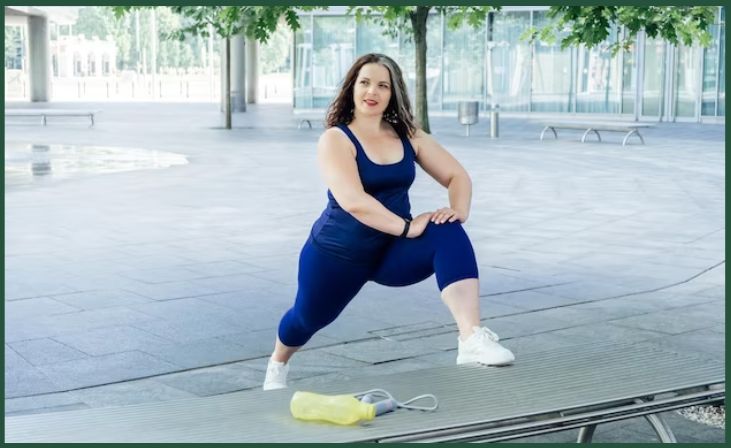Best Free Weight Exercises for a Powerful Physique
In the pursuit of physical fitness and a healthier lifestyle, incorporating free weight exercises into your workout routine is nothing short of transformative. These exercises are the cornerstone of strength training, helping you build muscle, burn fat, and sculpt the body of your dreams, all without the need for expensive gym equipment or complex machines. In this comprehensive guide, we will delve deep into the world of free weight exercises, exploring their myriad benefits and the top choices for achieving your fitness goals.
Whether you’re an aspiring bodybuilder, an athlete looking to enhance performance, or someone simply seeking to improve your overall health and well-being, free weight exercises offer a versatile and effective solution. From compound movements that engage multiple muscle groups to isolation exercises targeting specific areas, the possibilities are endless. Whether you’re lifting dumbbells, barbells, or kettlebells, these exercises allow you to harness your body’s natural strength, making them accessible to individuals of all fitness levels.
Join us on this journey as we uncover the best free weight exercises that will unlock your physical potential and set you on a path to a stronger, healthier you. Whether you’re a seasoned fitness enthusiast or just starting on your fitness journey, these exercises are your ticket to a fitter, more powerful physique. So, let’s dive in and explore the world of the best free weight exercises!
Also read: 10 Healthy Low-Carb Breakfast Ideas
Compound vs. Isolation Exercises

Before we delve into the world of the best free weight exercises, it’s essential to understand a fundamental concept that will shape your fitness journey: the distinction between compound and isolation exercises. These two categories of exercises serve different purposes in your workout routine, and comprehending their roles will help you design a well-rounded and effective program tailored to your fitness goals.
Understanding Compound Exercises
Compound exercises, often referred to as multi-joint exercises, are movements that engage multiple muscle groups and joints simultaneously. These exercises mimic real-life functional movements, making them incredibly effective for building overall strength and enhancing muscle coordination.
The benefits of compound exercises are numerous:
- Efficiency: Compound exercises allow you to work on several muscle groups in a single movement, maximizing your workout time.
- Strength Gains: They promote significant strength gains as they engage larger muscle groups.
- Calorie Burn: Due to their intensity, compound exercises help burn more calories during and after workouts.
- Functional Fitness: They improve your ability to perform daily activities and sports-related tasks.
Examples: Squats, Deadlifts
Two quintessential compound exercises are squats and deadlifts:
- Squats: A full-body exercise that targets your quads, hamstrings, glutes, lower back, and core.
- Deadlifts: Primarily work your hamstrings, glutes, lower back, traps, and forearms, making them a powerhouse exercise.
Also Read: Healthy Breakfast Ideas for a Nourishing Start
Unpacking Isolation Exercises
Isolation exercises, as the name suggests, isolate and target a specific muscle or muscle group. Unlike compound exercises, isolation movements focus on a single joint and muscle group.
Isolation exercises offer unique advantages:
- Muscle Definition: They help define and sculpt specific muscles, aiding in aesthetic goals.
- Muscle Imbalances: Isolation exercises can correct muscle imbalances or weaknesses.
- Injury Recovery: These exercises are useful in rehabilitation and injury prevention.
- Variety: Adding isolation exercises can add variety to your routine.
Examples: Bicep Curls, Leg Extensions
Examples of isolation exercises include:
- Bicep Curls: Isolate and target the biceps, helping you build well-defined arm muscles.
- Leg Extensions: Focus on the quadriceps, contributing to strong and shapely legs.
Building a Balanced Routine

Having a well-balanced workout routine is essential for achieving your fitness goals efficiently and effectively. Whether you aim to build strength, gain muscle, lose fat, or improve your overall fitness, a balanced approach ensures that you target all the necessary muscle groups and maintain harmony in your physical development.
Full-Body Workouts
The Importance of Balance
Full-body workouts are an excellent way to achieve overall fitness and balance in your physique. They involve exercises that engage multiple muscle groups simultaneously, ensuring that no area of your body is neglected. Here’s why they are important:
- Efficiency: Full-body workouts save time by working on various muscle groups in a single session.
- Functional Strength: They improve your ability to perform everyday tasks by enhancing overall strength and coordination.
- Calorie Burn: Engaging multiple muscle groups results in higher calorie expenditure, aiding in fat loss.
- Consistency: Full-body workouts can be less taxing on the body and allow for more frequent training sessions.
Sample Full-Body Routine
A sample full-body routine could include the following exercises:
- Squats: Target your legs, glutes, and core.
- Deadlifts: Work on your lower back, hamstrings, and grip strength.
- Bench Press: Engage your chest, shoulders, and triceps.
- Pull-Ups: Strengthen your back and biceps.
- Planks: Focus on your core and stabilizing muscles.
Also read: 11 Delicious Ideas for Low-Carb Diet
Split Workouts
Focusing on Specific Muscle Groups
Split workouts involve dividing your training sessions to focus on specific muscle groups on different days. This approach is particularly beneficial if you have specific aesthetic goals or are targeting particular areas of your body. Here’s why split workouts can be advantageous:
- Targeted Growth: You can give more attention to specific muscle groups, promoting targeted muscle growth.
- Recovery: Allows muscles to recover adequately between workouts, reducing the risk of overtraining.
- Variation: Adds variety to your routine and prevents boredom.
- Specialization: Ideal for bodybuilders and athletes looking to develop specific muscles or skills.
Sample Split Routine
A sample split routine could be as follows:
Day 1 – Chest and Triceps:
- Bench Press
- Dumbbell Flyes
- Tricep Dips
- Skull Crushers
Day 2 – Back and Biceps:
- Pull-Ups
- Bent-Over Rows
- Bicep Curls
- Hammer Curls
Day 3 – Legs and Shoulders:
- Squats
- Lunges
- Overhead Press
- Lateral Raises
Day 4 – Rest or Active Recovery
Day 5 – Full-Body or Active Rest:
- Incorporate a full-body workout or engage in low-intensity activities like yoga or walking.
Also Read: 10 Worst Starbucks Drinks
Strength and Muscle Gain: Best Free Weight Exercises

When it comes to building raw strength and packing on muscle mass, free weight exercises are your go-to tools. These exercises recruit multiple muscle groups, making them highly effective for stimulating growth and enhancing your overall power. In this section, we’ll dive deep into some of the best free weight exercises that are renowned for their ability to foster strength and muscle gain.
1. Squats
Technique and Form
Squats are the king of lower body exercises. To perform a proper squat:
- Stand with your feet shoulder-width apart.
- Keep your chest up and your back straight.
- Lower your body by bending at the hips and knees.
- Go as low as your flexibility allows while keeping your heels on the ground.
- Push through your heels to return to the starting position.
Muscles Targeted
Squats primarily target the quadriceps, hamstrings, glutes, lower back, and core muscles. Their ability to engage these large muscle groups makes squats a must-have exercise for strength and muscle gain.
2. Deadlifts
Technique and Form
Deadlifts are unparalleled for developing overall strength and power:
- Stand with your feet hip-width apart, with the barbell over the middle of your feet.
- Bend at the hips and knees to lower your body and grasp the bar with an overhand grip.
- Keep your back flat and chest up.
- Lift the bar by extending your hips and knees simultaneously.
- Lower the barbell back to the ground in a controlled manner.
Muscles Targeted
Deadlifts work your hamstrings, glutes, lower back, traps, forearms, and grip strength. They are known for their ability to add significant mass and strength to the posterior chain muscles.
3. Bench Press
Technique and Form
The bench press is a classic upper body exercise:
- Lie flat on a bench with your feet flat on the ground.
- Grip the barbell slightly wider than shoulder-width apart.
- Lower the barbell to your chest, keeping your elbows at a 90-degree angle.
- Push the barbell back up to the starting position.
Muscles Targeted
The bench press primarily targets the chest (pectoralis major), shoulders (anterior deltoids), and triceps. It’s an essential exercise for upper body strength and mass.
4. Overhead Press
Technique and Form
The overhead press is excellent for building shoulder and upper body strength:
- Stand with your feet shoulder-width apart.
- Hold the barbell at shoulder height with your palms facing forward.
- Press the barbell overhead until your arms are fully extended.
- Lower the barbell back to shoulder height.
Muscles Targeted
Overhead presses work the shoulders (deltoids), triceps, and upper chest. They enhance shoulder stability and contribute to a well-rounded upper body.
5. Rows
Technique and Form
Rows, whether using a barbell or dumbbells, are key for a strong back:
- Hold the barbell or dumbbells with your palms facing your thighs.
- Bend at your hips and knees slightly, keeping your back straight.
- Pull the weight toward your lower ribcage.
- Lower the weight back down with control.
Muscles Targeted
Rows target the upper back (trapezius and rhomboids), biceps, and rear deltoids. They help create a balanced and powerful upper body.
Also read: The Ultimate Guide to Stretches for Runners
Fat Loss and Toning: Best Free Weight Exercises

If your fitness journey primarily revolves around shedding excess body fat, sculpting a lean physique, and achieving a toned appearance, free weight exercises are your secret weapons. These exercises not only build muscle but also rev up your metabolism, making them indispensable for fat loss and toning. In this section, we’ll explore some of the best free weight exercises tailored specifically for these goals.
1. Lunges
Technique and Form
Lunges are a fantastic lower body exercise for sculpting your legs and improving overall balance:
- Stand with your feet together.
- Step forward with one leg and lower your body until both knees form 90-degree angles.
- Ensure your front knee doesn’t extend past your toes.
- Push off the front foot to return to the starting position.
- Repeat with the other leg.
Muscles Targeted
Lunges target the quadriceps, hamstrings, glutes, and calves. They also engage your core for stability.
2. Planks
Technique and Form
Planks are a core-strengthening exercise that can help create a toned midsection:
- Begin in a push-up position with your arms straight.
- Keep your body in a straight line from head to heels.
- Engage your core and hold the position for as long as possible.
- Avoid sagging your hips or lifting your buttocks.
Muscles Targeted
Planks primarily work the entire core, including the rectus abdominis, obliques, and transverse abdominis. They help tighten and tone the abdominal region.
3. Dumbbell Thrusters
Technique and Form
Dumbbell thrusters are a full-body exercise that combines a squat and overhead press:
- Hold a dumbbell in each hand at shoulder height.
- Perform a squat.
- As you rise from the squat, press the dumbbells overhead.
- Lower the dumbbells back to shoulder height and repeat.
Muscles Targeted
Dumbbell thrusters engage the quadriceps, hamstrings, glutes, shoulders, and triceps. This compound movement is excellent for burning calories and toning multiple muscle groups simultaneously.
4. Kettlebell Swings
Technique and Form
Kettlebell swings are a dynamic exercise that torches calories and works the entire body:
- Stand with your feet shoulder-width apart and hold the kettlebell with both hands between your legs.
- Hinge at your hips and bend your knees slightly.
- Swing the kettlebell forward and up to shoulder height by forcefully extending your hips and knees.
- Allow the kettlebell to swing back between your legs and repeat.
Muscles Targeted
Kettlebell swings primarily target the posterior chain, including the hamstrings, glutes, lower back, and shoulders. They also provide an excellent cardiovascular workout.
5. Mountain Climbers
Technique and Form
Mountain climbers are a high-intensity exercise that boosts heart rate and burns calories:
- Start in a push-up position with your hands under your shoulders.
- Bring one knee toward your chest while keeping your back flat.
- Quickly switch legs in a running motion.
- Continue alternating legs as if you’re running in place.
Muscles Targeted
Mountain climbers engage the core, shoulders, chest, and hip flexors. They help strengthen the core and improve overall cardiovascular fitness.
Conclusion
In this comprehensive guide, we’ve explored the transformative world of best free weight exercises. Whether your fitness goals involve building strength, gaining muscle, losing fat, or achieving a toned physique, these exercises are your allies in the journey to a healthier, more powerful you. From squats and deadlifts to lunges and planks, you now have the knowledge and tools to craft a customized workout routine that aligns with your aspirations. So, harness your inner strength, stay consistent, and watch your fitness soar to new heights with the best free weight exercises.
FAQ
Yes, free weight exercises can be adapted for beginners. Start with lighter weights and proper form to build a strong foundation.
No, you can perform many free weight exercises at home with minimal equipment. A pair of dumbbells or kettlebells can provide a comprehensive workout.
Focus on proper form and start with lighter weights. Gradually increase weight as you become more proficient. Always warm up and cool down, and listen to your body.




